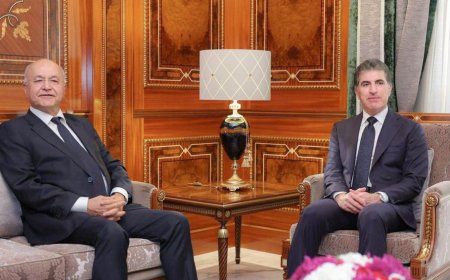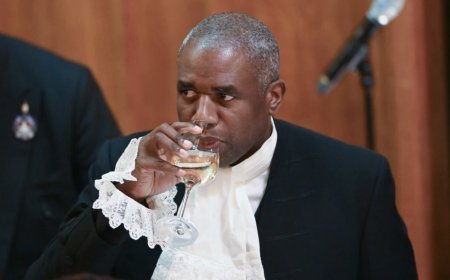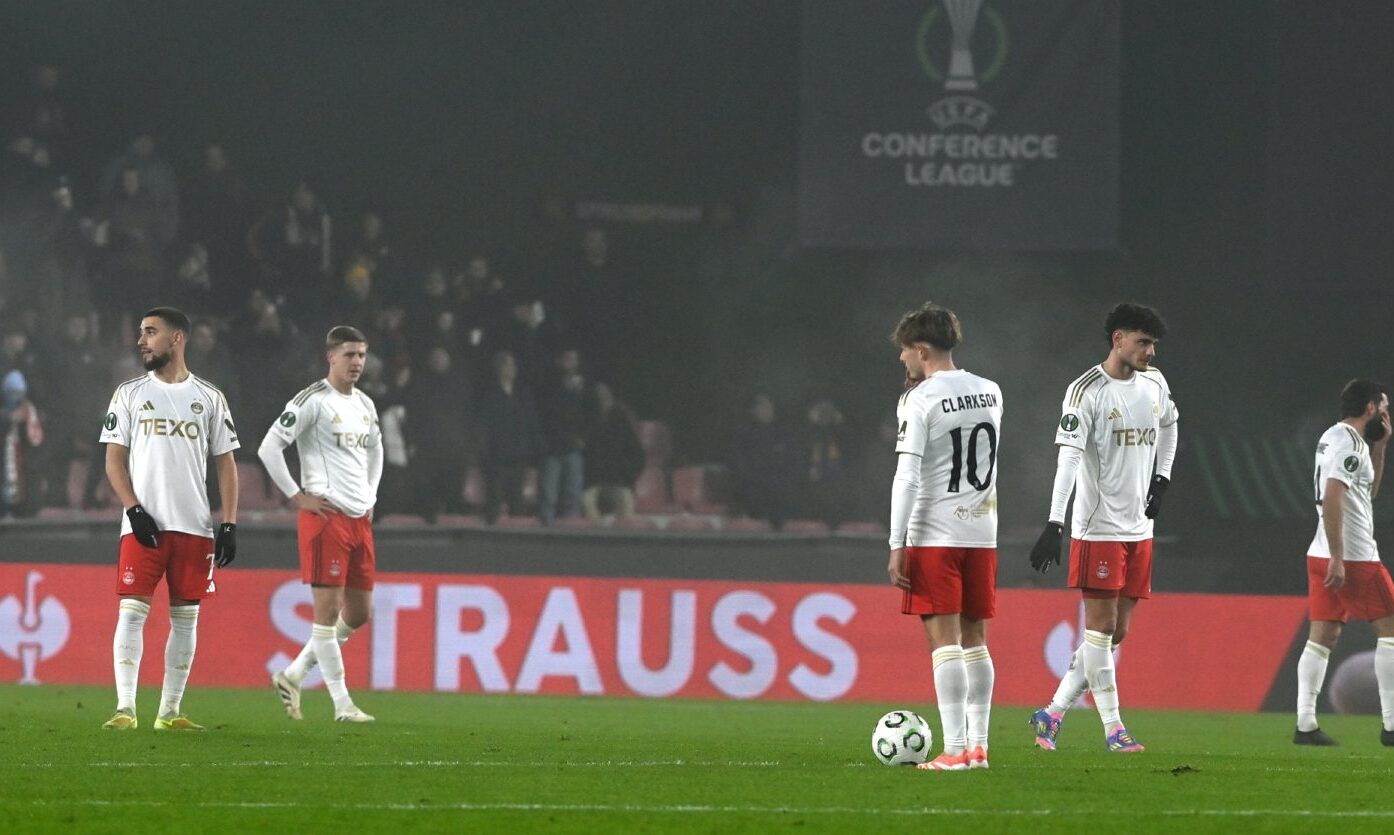Inside the world’s clumsiest heist
As the bungling burglars’ missteps emerge, the Louvre jewel raid has been reframed as a French farce

It was hailed at first as a dazzling act of criminal audacity; a raid on the Louvre in broad daylight, its priceless crown jewels spirited away in minutes.
But what initially bore all the hallmarks of a Hollywood script in the style of Ocean’s Eleven is rapidly turning from cinematic masterstroke to a farce.
In just seven minutes last month, a four-strong gang raided the Louvre’s Galerie d’Apollon – home of the French Crown Jewels – and fled on scooters with treasures worth about €88m (£76m).
The thieves parked a truck with an extendable ladder beneath the windows, broke in with angle grinders, and smashed glass cases holding imperial diamonds and emeralds once worn by Napoleon’s wives.
But the glamour vanished as fast as the thieves, who, as the investigation advances, increasingly resemble bungling amateurs.
In their haste, they left behind a glove, the dropped crown of Empress Eugénie, and even their truck, which they tried, unsuccessfully, to set on fire before escaping.
Paris prosecutor Laure Beccuau said the suspects were “clearly small-town people” and “small-time criminals” whose profiles did not match those “generally associated with the upper echelons of organised crime”. They all lived in Seine-Saint-Denis, north of Paris.
Two of them, a 37-year-old man and his 38-year-old partner from La Courneuve, were charged and remanded in custody last weekend. Both denied involvement.
The woman “was in tears as she appeared at a Paris court, saying she feared for her children and for herself”. She faces charges of complicity in organised theft and criminal conspiracy; her partner is charged with organised theft and criminal conspiracy with a view to preparing a crime.
Ms Beccuau said “significant” DNA evidence linked the man to the crime, found in the basket lift used during the robbery. Traces of his partner’s DNA were also discovered, possibly by transfer, she added. The man’s criminal record contained 11 previous convictions, most for theft.
Two other suspects – a 34-year-old Algerian national and a 39-year-old unlicensed taxi driver from Aubervilliers – were charged earlier after “partially admitting” involvement.
One was arrested at Charles de Gaulle airport as he tried to board a flight to Algeria – incredibly, given the suspicions it would raise – on a one-way flight; the other was detained near his home. Police believe these two broke into the gallery while their accomplices waited outside.
Ms Beccuau said the group’s methods suggested incompetence rather than sophistication. “They are clearly local people,” she said. “Some are connected, particularly the couple.” Two of the men had already been convicted together in a 2015 theft case.
In their haste to escape, the burglars dropped the most precious piece of all: a diamond and emerald-studded crown once belonging to Empress Eugénie, wife of Napoleon III.
They still made off with eight other items, including an emerald and diamond necklace Napoleon I gave to Empress Marie-Louise and a diadem set with nearly 2,000 diamonds. None of the jewels have been recovered.
“All avenues are being explored,” Ms Beccuau said, adding that the treasures could be used for money laundering. “We are examining all the possibilities offered by the black market for selling this jewellery, which I hope will not happen any time soon.”
Interior minister Laurent Nunez told Le Parisien: “There are four perpetrators, and at least one still to be found – plus, no doubt, the person or persons who ordered the job.” He added: “I remain confident that we will be able to find them.”
Chris Marinello, head of Art Recovery International and founder of the Art Theft Register, said the thieves’ behaviour bore little resemblance to a cinematic caper.
“They surely were not Ocean’s Eleven,” he told The Telegraph. “In Ocean’s Eleven, you don’t get caught, you don’t drop a crown, you don’t leave DNA and you don’t leave your tools behind. However, they did take on the Louvre, one of the most well-funded museums, in broad daylight. It’s almost as if it were a glorified smash and grab.”
While praising the French police for their swift arrests – “they’ve done a phenomenal job in a very short timeframe” – Mr Marinello questioned whether they had caught the thieves in time to recover the jewels.
“With jewellery, it’s completely different to paintings,” he said. “They can cut them up, break them up, and you’d never see them again.”
‘Crime pays’
He added that “crime pays at the present moment” in France. “It used to be that crime doesn’t pay, but what are they going to get? A couple of years in prison? There’s not enough jail space, they’ll be let out early and then spend the money they stole. There’s no deterrent factor.”
He pointed to a troubling pattern across Europe: “Many of the criminals have been arrested before – 10 to 15 times in some cases. Unless Europe starts to get serious about prosecuting criminals and putting them in jail for long sentences, this is just going to happen again and again.”
If the thieves looked amateurish, so too did the museum’s defences. Louvre director Laurence des Cars admitted security cameras did not adequately cover the thieves’ entry point but said a multimillion-euro modernisation plan was already underway.
A Senate commission of inquiry into museum security, convened in the wake of the heist, heard scathing criticism of both the Louvre and the Ministry of Culture.
Paris police chief Patrice Faure described the museum’s failure to request CCTV upgrades as an “administrative breach”, noting that many of its cameras were still analogue.
‘A humiliation’
Agnès Evren, a Right-wing Republican senator, said she was “appalled and very saddened by this obsolescence”. The inquiry revealed that 278 French museums had no CCTV at all.
Culture minister Rachida Dati said the theft exposed “a chronic underestimation of risk” and called it “a humiliation for our national heritage”. She promised an urgent review of museum security nationwide.
For many Parisians, the episode recalls another “amateurish but audacious” crime that humiliated French authorities – the 2016 armed robbery of Kim Kardashian West.
That gang of middle-aged petty criminals tied up the reality star in her hotel suite and escaped with £7m in jewels, leaving DNA and CCTV evidence at the scene. Like the Louvre suspects, they were small-time offenders from the Paris suburbs rather than professional thieves – and their success owed more to weak security than criminal genius.
The Louvre theft has triggered a wider debate in France about whether museums and luxury retailers alike are becoming soft targets.
Further heists
Within 24 hours of the Louvre break-in, a museum in eastern France reported the theft of gold and silver coins. And just this week, a man was arrested after a smash-and-grab raid on a Swarovski jewellery store in central Paris. In Lyon, thieves made off with precious metals from an industrial site.
Mr Marinello said the pattern was “open season on museums in Europe”. “If Europe doesn’t admit there’s a problem, they’re never going to solve it,” he said. “Criminals do not fear law enforcement or museum security.”
While the thieves’ methods may have looked sloppy, and the Louvre’s security mediocre, the same cannot be said for France’s forensic detectives, whose speed of tracking the suspects was testament to the power of DNA in police investigations in France.
It took less than a week for police to identify and arrest two of the suspects, thanks largely to genetic prints recovered from the scene – on the Louvre’s shattered window, on the mechanical lift and even on one of the scooters used in the getaway.
“I am convinced that we would not have found these people if the DNA that was found at this theft hadn’t matched with this database,” Gaëtan Poitevin, a criminal lawyer in Marseille told the New York Times.
Investigators processed more than 150 forensic samples linked to the crime and cross-referenced them with the National Automated Genetic Fingerprint File, which now contains more than 4.4 million profiles and can be cross-checked against 30 other European and US databases.
In the words of Olivier Halnais, head of the national union of forensic police officers: “In just a few hours now, we can have a positive DNA result.”
For all of France’s security lapses, its forensic prowess is among the most advanced in Europe – a fact that ultimately ensured some of the alleged Louvre thieves’ swift downfall.
Yet even as prosecutors congratulate themselves on rapid arrests, one figure remains conspicuously absent: the suspected mastermind.
Ms Beccuau said “at least one other perpetrator” is still being sought. Mr Nunez went further, suggesting the existence of “one or more organisers” who may never have entered the museum.
It is possible that, while those suspects at what police call “the lower end of the criminal spectrum” now languish in custody, the true architect still walks free.
As for the jewels, despite the prosecutor’s promise of lenient sentences for anyone who hands them in, they may already have slipped beyond reach.
[Source: Daily Telegraph]













/file/attachments/orphans/rebecca-hague-mothers_864112.jpg)






































